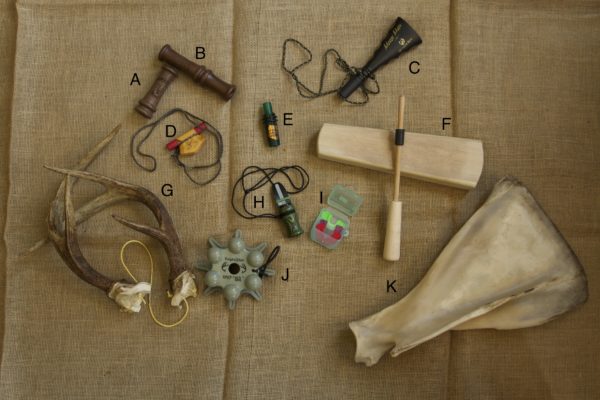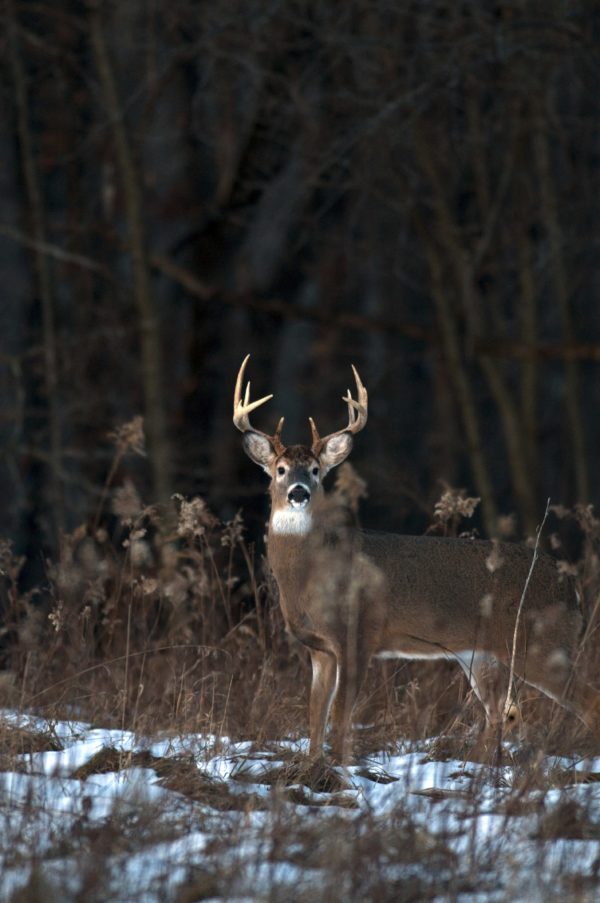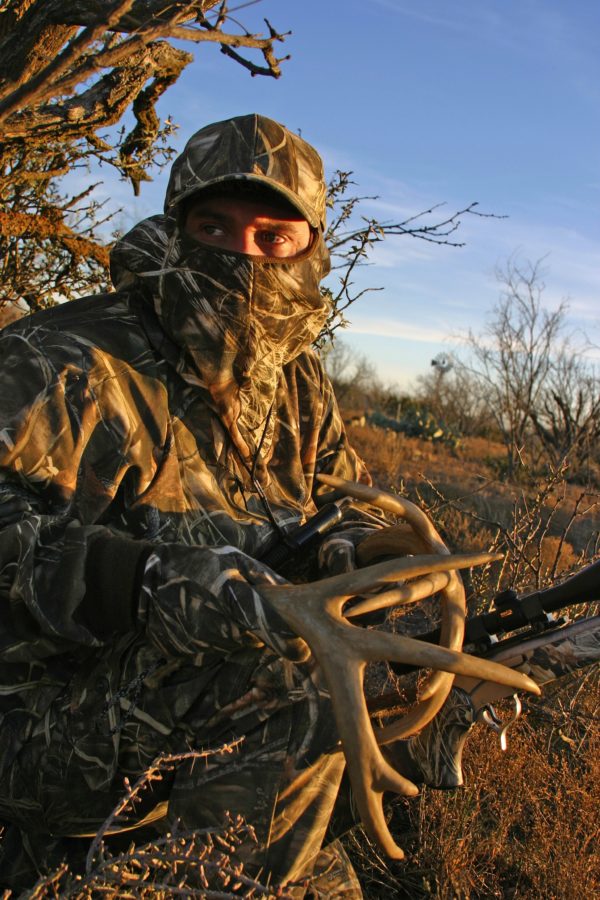
Calling and decoying big game is so much fun because it’s just about the only time in life when you can justify deception, double-crossing, hoaxing, fraud, dupery, and dishonesty.
Here, the goal of the hunter is to mimic, through visual and audio trickery, the same critters that he’s trying to harvest. It’s an exciting, challenging, and interactive discipline that forces you to learn detailed information about your quarry, information that will inevitably lead to more successful hunts and a deeper appreciation for the animals that we are blessed to share the woods with.
Decoys
For our purposes here, a decoy is defined as an artificial animal used to entice a real animal into range of a bow. For the sake of safety, big game decoys should be reserved exclusively bowhunting. These are lifelike decoys that can fool animals and hunters alike; obviously, you do not want another hunter shooting in your direction. The tactic of using decoys for big game is still in its infancy.
In recent years, there’s been a steady proliferation of decoy types, and now you can find some sort of decoy for many species of big game, ranging from antelope to elk. The most versatile and effective decoys are 3D picture decoys that use high-quality images of animals printed on an elastic fabric that can be stretched over a thin wire frame.
These are lightweight and packable. For some species, you use a female decoy to draw in males during the breeding season. For others, such as antelope, it can be more effective to use a decoy of a small male. This elicits an aggressive territorial response from dominant males. Decoy use for each animal is covered in the dedicated species sections.
In fact, the territorial response of the males of some species is so strong that they’ll be attracted to anything that suggests the presence of another male. A simple white flag on a stick, or a wearable hat made to look like as a male antelope, will sometimes draw in antelope bucks who want to bully the suspected youngster and drive him away.
Hunters also use antlers of deer, elk, and moose to the same effect. Flash the antler from behind a tree or bush to give the impression of a rival male. This might just draw him in close enough for a shot.
When hunting predators such as bears, decoys made to look like wounded or distressed prey can be effective. Waving a patch of fur or an animal tail on a stick can get the attention of a black bear and perhaps bring him close enough for a shot.
Talking to Animals
Calling for big game is a much more established strategy, and it’s much more difficult to master. You need to understand the proper sequences of calls and also the proper pitch, tonality, and cadence. Not only are you trying to learn the “words” used by animals, but you’re also trying to build proper sentences as well.
To understand this, imagine a high school (party?). Suddenly there’s a loud banging on the door accompanied by either “This is the police” or “Pizza Delivery.” Although both statements are in the English language, they have completely different effects on the partygoers.
The same opposing effects can be had on game when the wrong call is made at the wrong time or with improper tone. Mastering these languages requires a ton of practice and careful study of the sounds made by actual animals. Thankfully, there are many DVDs, downloadable videos, and Youtube videos that explore this information. Hint: Any instructional material by Will Primos is going to be excellent.
Great callers listen and practice year round, even keeping a few calls on the dashboard of their car or truck so that windshield time equals practice time. Calling practice in the home needs to be done in moderation, though, as it can cause serious marital strain.
Exploring Call Types
There are many types of big game calls available to hunter. Internal and external reed calls are the most widely available and easily learned types of big game calls. It’s easy to imagine that the original version of a reed call was someone holding a piece of grass in their fingers and blowing on it.
Today the reeds are usually coupled with tubular structures made of wood and/or synthetic materials with either an open reed on one end or an enclosed reed inside the tube. The size of the reed and the tension at which it is held dictates what the call will sound like. Predator calls, elk calls, and whitetail buck calls are all made in this style.
Diaphragm calls, or mouth calls, are the next most popular type of big game call, particularly for predators and elk. These are placed inside your mouth, against the upper roof, and air is blown between your tongue and the call’s latex reed. These are a little harder to master, but have a great advantage over other calls in that they are completely hands free and generally more versatile. To amplify the sound and give it a more genuine quality, diaphragm users can blow into a tube.

Rattling and scraping calls are different in that they don’t imitate the sounds that animals make with their vocal cords; rather, they imitate the sounds that they make with their antlers. Many whitetail hunters have rattled two deer antlers together to imitate the sound of two fighting bucks in order to lure in a competitor or curious onlooker.
Artificial calls or devices have been made to replicate this sound as well. A rattling bag is simply a dozen or so dowels placed in a loose bag that resembles a tube sock. Held between two hands, the bag is rolled back and forth creating a sound simulating antlers clashing.
A dried moose scapula from a previous year’s hunt can be used to emulate moose antlers scraping brush. This method of calling moose is particularly effective during the pre-rut, when bulls tend to fraternize for a period of time before turning into mortal enemies during the breeding season.
Electronic calls, which do the work for you, are very popular among predator hunters. These devices can store thousands of sounds, which can be played back with the push of a button. However, their use is almost categorically prohibited for big game. Before using any electronic call, check your state’s regulations regarding their use.
The opposite extreme from electronic calls is attempting to use your own unaided vocal chords. Moose calls are fairly easy to produce on your own, but turkey calls are a nightmare. Many other animals fall between these two extremes. In general, it’s difficult for adult males with naturally deep voices to consistently produce the high-pitched sounds of game animals. But if you can figure it out, it can be deadly. Natural callers are some of the best in the business.
Why Animals Vocalize
In general, big game animals make calls for three reasons: for mating purposes, to signal distress or alarm, or to enforce herd dynamics and conduct various social interactions. The bugling of bull elk and the grunting of deer and moose are closely associated with mating, though it’s true that they will sometimes make these noises outside of the breeding season. Not unlike humans, the males of big game species are often overcome by poor judgment when pursuing the opposite sex or defending their love interests again rivals; quite often, they lose their inhibitions and make poor decisions, which can work to the advantage of the hunter.
Not all effective game calls are communicated between males and females. The sound of a male’s antlers rattling together or thrashing brush can be a very seductive to another male, who might approach out of curiosity or territoriality — basically, he wants to see what the guys are up to, and maybe get involved himself.
Distress calls are meant to mimic the sound of dying, wounded, or panicked animals. Such noises can bring in hungry predators looking to capitalize on another creature’s misfortune, or they might bring a member of the same species that’s coming to the rescue. The sound of a screeching javelina might sound like a dinner bell to a black bear, but it will sound like a call-to-arms to a pack of javelina.
Social calls exploit the gregarious nature of herd animals, who generally find comfort in the company of others. The sound of other herd mates not only implies safety and companionship, but it can signify an available food source as well. And since wild animals are so easily habituated to food sources, the sounds of sources themselves can be enticing to animals. There are many instances where hunters have observed grizzly bears moving toward the direction of a rifle shot in order to scavenge a fresh gut pile.
In places like Texas, where the practice of feeding deer with corn is well established, the deer are attracted to the noise created by whoever disperses the corn. In most cases, this is an automatic feeder. When the feeder turns on to sling corn, the sound of the whirring propeller and the corn hitting nearby foliage is enough to cause a minor stampede.
In the Northwoods of Maine, the sound of a chainsaw is known to attract whitetail deer during the winter. For them, the chainsaw means a freshly felled tree which equates to fresh browse that’s been knocked down to ground level. Such mechanical sounds are not used for hunting purposes in any widespread fashion, at least not yet.
No matter how good you are at decoying or calling big game, you’re relying on a certain bit of gullibility on the animal’s part. Once a critter has survived one or two encounters with fakery it can become extremely suspicious of anything that isn’t absolutely genuine. As a hunting season wears on, the standard decoys and calls used by many hunters become ineffectual and can even begin to work against the hunter.
As the animals get wisened up, you need to employ new sounds and tricks in order to stay competitive, or else move on to other strategies altogether. Just forty years ago, for instance, no one knew how to make cow elk sounds because you didn’t have to; hunters knew how to make the bugling sound of bulls by blowing turkey diaphragms through plastic tubing, and elk would come running to every bugle real or fake that echoed through the mountains.
Once elk began to grow suspicious of bugles, say thirty years ago in some areas, hunters started learning how to produce rudimentary versions of the whistles and mews used by cow elk. Then that, too, became a worn out strategy. So game call manufacturers began marketing ever more realistic sounding cow elk calls, and the old calls became obsolete. Nowadays, if you blow an elk bugle in a competitive location, you’re more than likely going to send elk running in the opposite direction.
Around 2002, a push call came on the market which produces very realistic cow elk calls. With this call in your hand and a diaphragm in your mouth, you could sound like a small herd of elk. This strategy really brought bulls running in. The problem was that this call was very easy to use, and well marketed, and soon every elk hunter had one. Within 5 years the novelty wore off, and the push call became a sure-fire way to repel high-pressure elk.

You can watch a similar phenomenon happen overnight if you’re hunting javelina. The first time a herd hears a javelina distress call they will trip over themselves to come rushing in your direction. Go back to that same pack of javelina the next day and try it, and they’ll disappear in a cloud of dust. Game animals are quick learners, which isn’t at all a bad thing.
After all, intelligent game equals intelligent hunters.
A Handful of Extra Tips for the Hunter Using Decoys and Calls
- Be careful not to overcall. It sounds phony and suspicious. It’s not uncommon for an experienced caller to go fifteen or twenty minutes between making sounds. Listen to the animals themselves and mimic the frequency with which they talk.
- To add realism and depth to your calling set up, use two callers. It creates a herd dynamic and you’ll sound a lot different than most hunters, who are using just one call.
- Try moving around when calling, especially when you’re working an animal that won’t come in close. Often, a little movement gives your setup the necessary realism. Also try making some natural sounds to go with your calling, such as rustling leaves or the raking of an antler. Do it subtlety at first, and make sure you get a positive response before repeating.
- Mouth calls, or diaphragm calls, come in many configurations; the frames have different shapes and thicknesses, and they use different types of latex cut in different ways. Even mouth calls of the same brand and model might sound different because of inconsistencies in the latex. If you can’t get the sounds you want, try another mouth call. Eventually you’ll find one that works for you.
- Practice, practice, practice! That is the only way that you’ll ever get good at calling big game.





